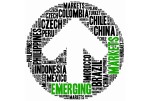MUFG: EMs a tale of two halves in 2023

Slow pace of deceleration in core inflation is likely to bias EM central banks towards erring on the side of caution on rate cuts this year.
The disinflationary narrative in EMs has borne some setbacks in recent weeks, causing markets to reassess the speed and scope of the fall in consumer prices. While there are challenges in EM economies where fiscal policy is loose (Brazil and Hungary), where exchange rates are weak (Egypt and Colombia) or where wage growth remains elevated (Israel and Romania), the broad EM disinflationary trend remains intact. Indeed, three month annualised core inflation rates are falling almost uniformly across the EM complex.
Yet, although disinflation is a core theme in EMs, we believe the slow pace of deceleration in core inflation is likely to bias EM central banks towards erring on the side of caution on rate cuts this year, leaving real ex-ante policy rates elevated across EMs – a core proposition that will offer support to capital flows.
Too close to call
Whilst EMs continue to grapple with much the same themes at the turn of the year, we view the outlook as a tale of two halves in 2023. A fading boost from reopenings, a global manufacturing cycle downturn and tighter financial conditions are lumpy headwinds that will weigh on EM prospects in the first half of 2023. However, China’s zero COVID policy exit, the eventual end of rate hikes and a US dollar peak, all offer significant tailwinds to the EM complex in the second half of 2023 (see here).
EM securities attracted USD 66 bn in January 2023 – the largest single monthly inflow levels since January 2021 – on the back of a slowdown in DM interest rate hikes and a more favourable outlook that has allowed a number of EMs (especially in the MENA and EM Asia regions) to go back to issue fresh debt in international capital markets.








